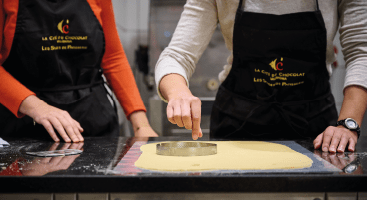The History of Aprons
The apron has generally been a symbol of hospitality. Worn by granny’s baking cookies or in the workplace as uniforms, this “clothing attire” has served many purposes for many years.

Do we actually know the history of the apron?
First, what actually is an apron?
Usually tied at the waist, an apron is a garment that protects the clothes under the apron.
‘Apron’ comes from the French word ‘naperon’, loosely translated to small tablecloth. Since this word was often mispronounced as ‘an apron’, in the 17th Century, the garment eventually became known as an ‘apron’.
Over years, aprons have been included as part of uniforms, and rituals or as fashion statements. These have so many purposes, depending on the purpose they are made using many different fabrics, including cotton, linen, leather or even rubber.
Types of aprons throughout history
Through history, there have been many types of aprons used by maids, housewives, workers and even ancient goddesses.
- Bib aprons.
- Waist aprons.
- Cross back aprons.
- Pinafores aprons.
- Tabards aprons.
- Bungalow aprons.
Bib Apron:
AKA the ‘French chef’s apron’, covers either the full or half length of the body usually to the mid-thigh or knees. Tied over the neck and at the waist, it was believed that the first few bib aprons were made from fabric scraps. These are the same types worn by our Valrhona chefs all around the world.
The Bib aprons are now more commonly used in the hospitality industry. Forget about the old school ideas of domesticated house wives.
Waist Apron:
AKA Half Apron is a traditional kitchen apron tied around the waist and reaches down to the mid-thigh. Back in the day, maids and housewives wore these types of apron. These days it is a popular choice for restaurants, cafés and bars.
Pinafore Apron:
Usually worn by children featuring ruffles, ribbons and bows, more of a fashionable piece of clothing with more fabric over the shoulders than traditional bib aprons. Kids and dolls often wore pretty pinafores as going out outfits.
Tabard Apron:
This type of apron covers both the front and back of the body, this Apron dates back to the Middle Ages. Fastened with side or waist ties, covering the upper part of the body. Originally worn by peasants and even knights. The Tabard apron is now commonly used by bakers, nurses and retail workers.
Bungalow Apron:
Back in the early 1900s, the Bungalow was a popular apron style worn by housewives. As a simple design with kimono sleeves, no trims and minimum fasteners. Designed as a standalone garment, not over other clothing. Appropriate to wear at home, something between a housecoat and nightgown.
Aprons Through The Ages
Back in ancient times, Egyptian pharaohs and fertility goddesses wore decorated aprons to symbolise their status. A While ago till now in Europe, housewives, tradesmen and artisans wear aprons for more functional reasons.
In the US, Native Americans wore aprons for traditional ceremonies, American colonists wore the these to protect their clothing.
Mid-20th Century
A housewife’s essential accessory, seen as an icon status of the domestic goddess. After World War II, the apron became a symbol of a cosy family ideal, worn to bake, move pans around the oven, carry around fresh vegetables from the garden, clean around the house, or even signal to their children to come inside for dinner.
20th Century fall of the apron.
Over time women disliked the idea of being seen as just a housewife, women started looking outside the home for satisfaction. Aprons were suddenly old-fashioned garments that only grandmothers wore.
Till today they remained a staple of the workplace. Aprons, once again are used primarily for functional reasons such as chefs, butchers, barbers and waitresses continued to use aprons during this time.
Aprons today
Still mainly a symbol of hospitality, the apron will always have an significant place in history and continue to do so. Whether used for practical, decorative or ceremonial purposes, aprons have a valuable role through the ages.
Undergoing many changes over the years, this garment has risen, fallen and now been revived.
 Microsoft Edge
Microsoft Edge
 Google Chrome
Google Chrome
 Mozilla Firefox
Mozilla Firefox
 Opéra
Opéra


